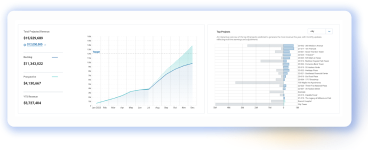Data Analytics
The science of analyzing raw data in order to draw conclusions about that information. Contractors are now leveraging many of the techniques and processes of data analytics to uncover trends and clarify metrics in ways that yield a competitive edge.
Database
An organized collection of data, generally stored and accessed electronically from a computer system.
Data Cleansing
A process of revising data to remove incorrect spellings, eliminate duplicate entries and add missing data. It’s an important step for contractors: incorrect data can lead to bad analysis and wrong conclusions. (Related: Data Hygiene).
Data Collection
In the construction context, the systematic gathering and measuring of information from sources in the office and the field. The goal is to get a complete and accurate picture of labor, costs, equipment, safety and much more. Everytime a controller updates an invoice for a project, or a crew member fills out a safety checklist on an app, that’s data-collection.
Data Hygiene
Processes conducted to ensure that contractors’ data is as error-free as possible. That means eliminating duplicate records, incomplete or outdated data, and the improper parsing of record fields from disparate systems.
Data Lake Collections
A storage warehouse that holds a significant amount of raw data in its original format until it is required. Contracting firms can use data lakes to run queries, and tools like ProNovos can examine smaller data sets to answer a vast array of business questions.
Data Modeling
Modeling is all about turning data into predictive and actionable information. Building models that can predict and explain outcomes is a key part of construction data analytics.
Data Science
At its essence, data science is a field that works with and analyzes large amounts of data to provide meaningful information that can be used to make decisions and solve problems. The work, which is increasingly important for contractors, includes computation, statistics, analytics, data mining and programming.
Data Set
Quite simply, a collection of data, particularly one that is specifically structured. In the case of construction contractors, a data set could be from a particular project or the entire accounts receivable for the year. Data sets can be small and simple to work with or large and complex.
Data Visualization
To make data more easily digestible by rendering it in a visual context, construction data analytics platforms automatically generate all kinds of visualizations, from basic charts and graphs to complex “heat maps.”
Data Warehouse
Essentially, the central place where contractors flow their data from the gamut of project and organizational sources.
Data Wrangling
The process of formatting or restructuring raw data to suit specific needs or increase its decision-making power (sometimes referred to as data munging).
Decision Tree
A tool that data scientists use to visually lay out decisions and decision making. Widely used in data mining and machine learning.
Descriptive Analytics
What happened? When contractors have a better grasp of historical data, they can see important changes with greater clarity. Descriptive analytics is essentially the process of using a platform like ProNovos to draw such comparisons. See ProNovos’ Key Performance Indicators page for a sense of this.
Diagnostic Analytics
Why did it happen? Referred to as root-cause analysis, this includes using processes such as data discovery, data mining and drill down and drill through.
